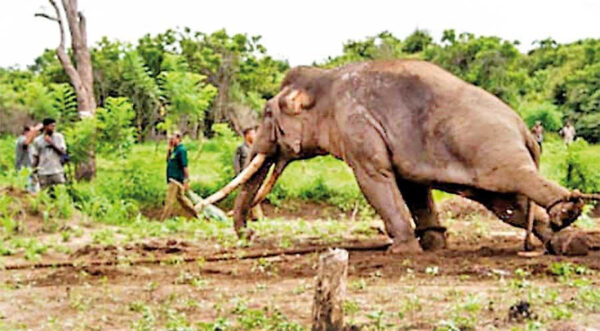Monarchs of the wild losing battle of destruction-by Rajiv welikala
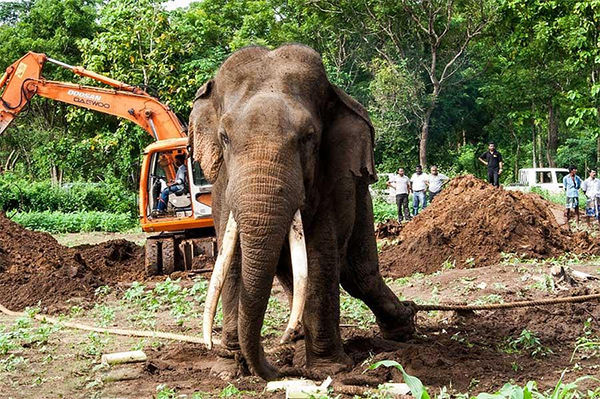
Source:Daily Mirror
In 2010 Parakrama died after he was relocated from Galgamuwa to Thambuttegama.
Once loaded up on the truck the tusker headed towards Thambuttegama, when suddenly the entourage realised that the tusker had buckled down on one knee. His leg was stuck, as a part of the plank which supported the tusker on the truck had broken and his leg was stuck partially in the gap. This resulted him buckling down, and struggling to get up. Another reason he struggled was he was partially sedated by the vetenerarians who were supervising the operation. That night despite the struggles, the tusker breathed his last as the sheer weight on his chest was too much to bear.
- The primary reason is due to rampant habitat loss. In an island such as Sri Lanka, with a total human population of 21 million, where does this leave room for over 6,000 wild elephants?
- Eyewitness accounts of the incident also revealed when tracking this tusker that there were footprints of another elephant which might have been the actual killer
- A sad and touching sight was when the bull dug his tusks on the ground in refusal of being dragged backwards towards the lorry
- Sadly in 2017 someone decided that this peaceful animal would be better off dead and his ivory sold hence a plan was hatched to shoot him and retrieve the tusks
- The park has been over run by an invasive plant known as Lantana or Gandhapana, and the natural “mana” grass has all but depleted

Sri Lanka’s tuskers are a rarity with only 7% of male elephants on the island carrying tusks. Every individual animal is precious. Sadly their fate seems to be destined for extinction as the number of tuskers are dwindling annually.
The primary reason is due to rampant habitat loss. In an island such as Sri Lanka, with a total human population of 21 million, where does this leave room for over 6,000 wild elephants?
The wild areas in the island are extremely fragmented; hence the elephants have very small isolated pockets to move about looking for food and water.
This fragmentation exposes tuskers and elephants to people, and hence begins the never ending cycle of Human-Elephant Conflict or HEC.
Through the years there have been many magnificent tuskers who have paid with their lives. There are countless others who may have succumbed to a sad fate, but that is not known to the public. But from those who have departed us, there are few Titans of Note.
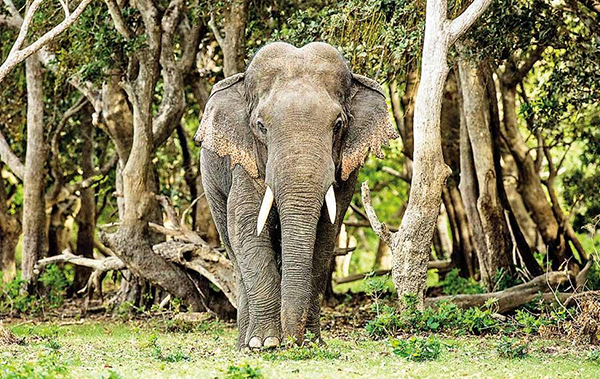
Revatha
Revatha, was the largest and most dominant bull in the Kalawewa region’. Sadly 2021 was his last year, as he fell to the careless erection of an illegal electric fence which had been powered from the main line.
Parakrama aka Siyambalangamuwa Tusker
It is fitting to begin this saga by relating about the greatest tusker of them all, the great ‘Siyambalangamuwe Maha Etha’ who was named as Parakrama. This bull was by far the most spectacular wild tusker Sri Lanka had for many years. His tusks were large and thick and they were both evenly shaped and ran all the way down to the ground. Never was there a tusker with such symmetrical and long ivory. Sadly his home was the turbulent region of Galgamuwa, a place with hardly any forest left for elephants to roam, with a large agricultural land and towns spread across the vast extent of the province.
Only a few have seen this magnificent behemoth due to his shy nature. He was made famous by the feature about him in a local TV programme named Atapattama.
Sadly his new found fame was his demise because in 2010 he was accused of killing a fisherman in the shores of Galgamuwa Wewa. The truth later revealed by local sources is the so called “eye witness” reported that an “Etha” (Sinhalese word for tusker) killed their comrade. But more queries reveal that this person, whose first language is not Sinhalese, has said the word Etha as this was the only word he knew. And by that he didn’t mean to refer to this particular tusker, but a different elephant without tusks. The Department of Wildlife Conservation was ordered to capture and relocate this tusker. Eyewitness accounts of the incident also revealed when tracking this tusker that there were footprints of another elephant which might have been the actual killer. There are tales of old Tuskers and bulls having companions, usually younger males who act like “bodyguards”; these are known as ‘Askari’ in Kenya and might be actually the culprit of the crime. Nevertheless, the operation went as planned, and the tusker was captured and sedated and tied down in a peanut cultivation. The next day the whole village had arrived to watch this spectacle. As the vehicle for transportation,a lorry, was approaching the bulldozer was preparing to drag this magnificent bull onto the vehicle which was to take him far away. A sad and touching sight was when the bull dug his tusks on the ground in refusal of being dragged backwards towards the lorry. This tusker was right in his resentment as this was to be his last day on earth. Once loaded up on the truck the tusker headed towards Thambuttegama, when suddenly the entourage realised that the tusker had buckled down on one knee. His leg was stuck, as a part of the plank which supported the tusker on the truck had broken and his leg was stuck partially in the gap. This resulted him buckling down, and struggling to get up. Another reason he struggled was he was partially sedated by the vetenerarians who were supervising the operation. That night despite the struggles, the tusker breathed his last as the sheer weight on his chest was too much to bear. The greatest tusker in Sri Lanka was lost overnight due to the negligence and carelessness of those who were supposed to be in charge of protecting them.
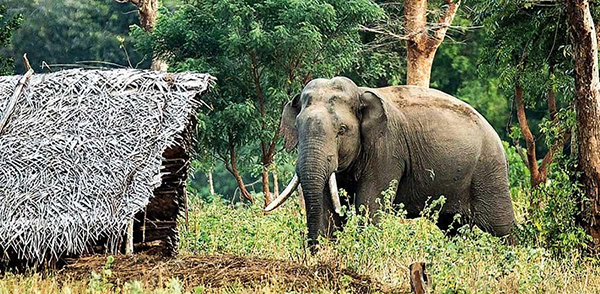
Due to speculation by villagers in Hunuwilgala the news of his presence was known to a poacher in 2014. The poacher managed to track him down, shoot and kill him and attempted to sell his tusks. He was eventually caught by the police. All that remained in the end was the decomposing carcass of a once mighty tusker.
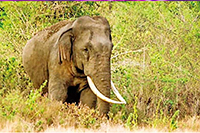
Dalaputtuwa or Galgamuwa Crossed Tusker
Another magnificent tusker lost to the greed of man was the Dalaputtuwa or crossed tusker. He too roamed the same region as Parakrama, but was seen more often out in the open, partially due to the fact that he had terrible eyesight and potentially being blind in one eye. He moved between cultivations and small lakes scattered across the region and was mostly treated as a lumbering pet rather than a menace to the local populace. He did get himself into trouble a few times, when he moved out of his usual range of Galgamuwa and ventured towards Kekirawa. Here he was completely disoriented and began to attack passing vehicles. Gradually the authorities managed to herd him back to his home range.
Another time he was shot badly on the leg, may be due to a trip wire gun and was walking with a severely festering wound. After a few months, the authorities came to his aid, but by this time his leg had blown up like a balloon. But gradually they managed to bring the wound under control.
Sadly in 2017 someone decided that this peaceful animal would be better off dead and his ivory sold hence a plan was hatched to shoot him and retrieve the tusks.
The police nabbed the culprits attempting to sell the tusks and the concerned few who noticed the shape of the tusks immediately knew these were none other than those of the Dalaputtuwa. Many days of searching finally revealed the decomposed body of this once mighty bull.
Sadly the authorities could not do justice to its fullest and due to the red tape and inefficiencies of authorities the accused were released.

Galgamuwa Crossed Tusker or Dalaputtuwa
Sadly in 2017 in Galgamuwa someone decided that this peaceful animal would be better off dead and his ivory sold hence a plan was hatched to shoot him and retrieve the tusks.
Wasantha
Wasantha was found in and around the region of Wilpattu. He was seen in the park occasionally as the park opened up after many years in 2003. Therafter he was seen on a regular basis in the village of Hunuwilgala in the surrounding village lakes such as Galgadawala. A very docile and shy tusker, he too seemed to be partially blind in one eye.
Due to speculation by villagers the news of his presence was known to a poacher in 2014. The poacher managed to track him down, shoot and kill him and attempted to sell his tusks. He was eventually caught by the police. All that remained in the end was the decomposing carcass of a once mighty tusker.
